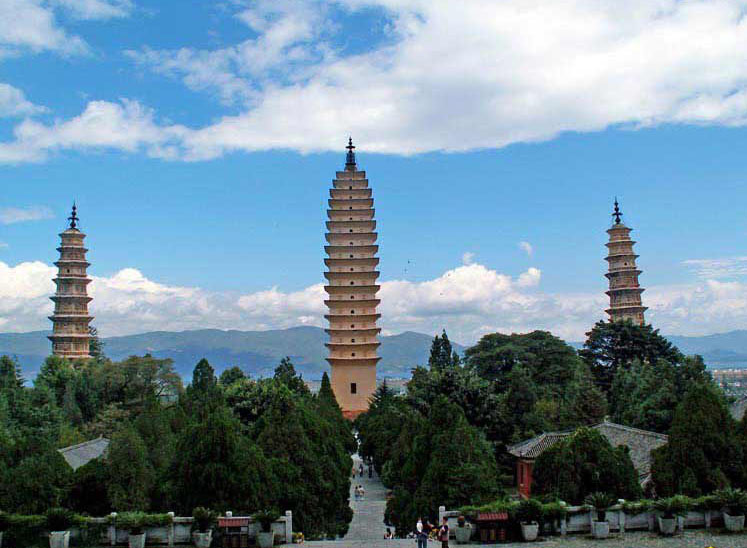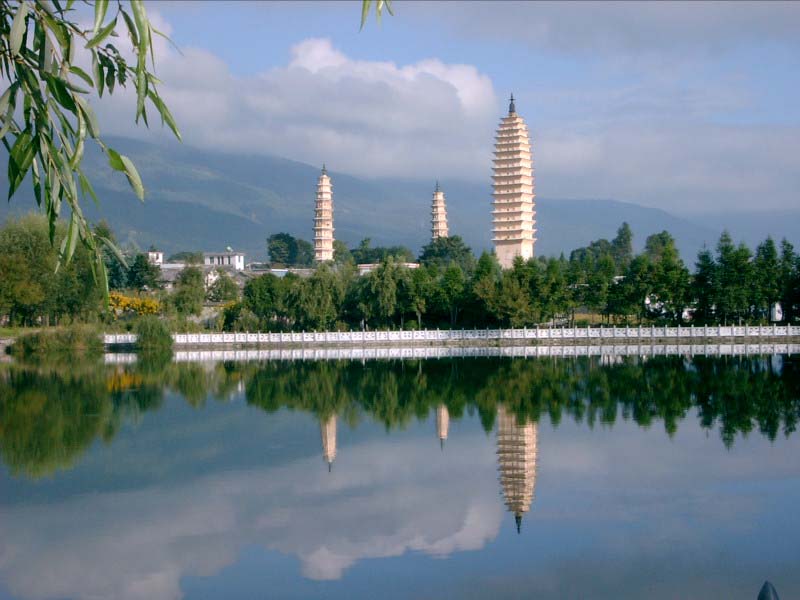Dali, a place one never wants to leave
Updated: 2007-06-21 10:46

Known for their resilience, the Three Pagodas have survived a few severe earthquakes. The local government nonetheless makes great efforts to ensure the pagodas remain as strong today as when they were first built.
Travelling some 27 kilometres south of Dali we come to a popular beauty spot known locally as the "Butterfly Spring". Situated at the foot of Mount Shenmo, the spring rises to form a square shaped pool that is shaded by the dense foliage that lines its banks. The pool is some 50 square meters overall and above it is an ancient tree which continues to grow though it is lying on the ground. This is the famous "Butterfly Tree", so called because in the short interval when spring turns to summer; its fragrant blossoms attract thousands of butterflies.

This spectacular sight has inspired a local festival where the Bai people gather at the tree on April 15th for the "Butterfly Meet". The romantic spectacle of the butterflies feeding and mating in such abundance has made the day one set aside for courtship and each Bai youth will seek to win the love of his life by joining in with the traditional antiphonal singing.
At a pavilion near the spring, we find Mr. Yang, a local Bai musician who plays folk music for visitors.
At 40 years old Mr. Yang can play all kinds of instruments, especially the Suona and short flute. When he was 17, he was sent to study with a renowned local musician, Yan Xuezhong. He studied for three years and then started his own successful career. Now Mr Yang has five students of his own, including his own son, and plays in the park for visiting travelers.
"Now I am at a tie-dying cloth factory not far from the Butterfly Spring Park and here, I can watch the procedure for making a beautiful tablecloth. The workers are dyeing the cloth with paint made of Banlangen, which is a kind of Chinese herbal medicine. The paint is purely natural and is good for your skin and health. "
Tie-dying is the traditional handicraft of the Bai people. The tie-dyes are not merely their daily attire, but also considered as precious relics of Chinese art. One factory worker shares with us the process involved in tie-dying.
The first step involves drawing the different designs on each piece of cloth. The second step is to tie the cloth with thread - not too tightly not too loosely. Thirdly, it involves dyeing the cloth and finally, the threads have to be removed and the cloth hung out to dry.

